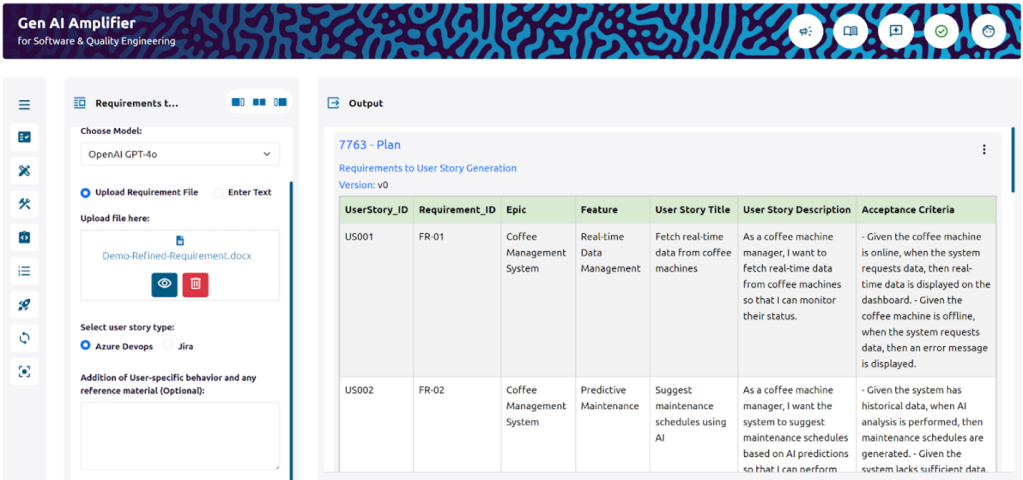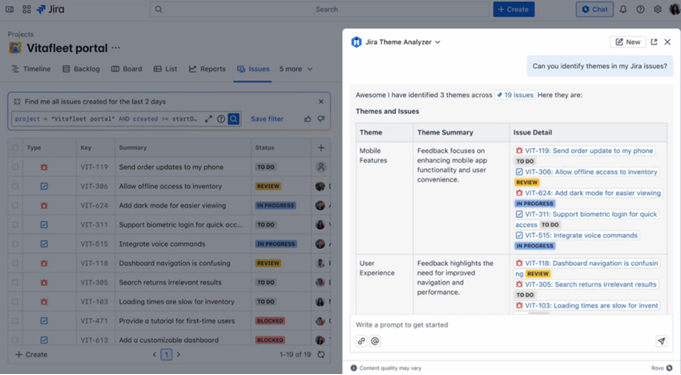Is Gen AI the way forward for app modernization? Part 1 – Developing a new feature to meet business needs or create competitive advantage.
Modernization projects are evolving legacy systems to meet the demands of today’s technologies while staying nimble enough to innovate for the future. Developers face a complex reality of technical debt, code inefficiencies, and the growing expectation to deliver faster without compromising quality. For many organizations, the process feels like navigating a maze of mounting deadlines and escalating costs.
When we speak with our clients its very clear that Generative AI (Gen AI) has quickly become a game changer that is redefining how we approach modernization. It’s transforming the developer’s entire workflow and freeing them from cumbersome tasks to focus on creativity. It’s amplifying their craftsmanship skills.
For organizations, Gen AI offers a smarter, faster path to modernization, and enables teams to scale efforts with precision and collaboration. Future-ready app portfolio enterprises are using Gen AI to empower developers to write better code faster—which accelerates application modernization efforts.
The stage is set for a new era of smarter development.
Gen AI supercharges innovation-ready organizations
Gen AI success is realized when organizations approach its adoption with a strategic lens and integrate it into a broader maturity journey:
- Standardization: Documenting and defining best practices.
- Industrialization: Implementing tooling to improve consistency.
- Automation: Using advanced tools to handle repetitive tasks.
- Gen AI: Elevating capabilities through context-aware automation that enables code generation, transformation, and remediation at scale.
Reaching this level of maturity unlocks the true potential of Gen AI code generation, which enables app modernization to become a competitive advantage, rather than a bottleneck. Gen AI helps automate time-intensive tasks, bridge skill gaps, and simplify legacy system complexities, which all lead to the empowerment of development teams to innovate and scale with greater efficiency. The result? Consistent, high-quality outcomes that keep pace with the demands of an ever-evolving digital landscape.
Today’s Coding Challenges
We code to create, to fix, and to evolve. Coding is how we keep applications relevant and reliable. It’s the means through which we innovate with new features and address issues in the tools and platforms we use.
In this article, we’ll look at the first of three primary purposes of coding in the context of app modernization, and the unique challenges that development teams encounter in each scenario:
- Developing a new feature to meet business needs or create competitive advantage.
- Remediating issues—bugs, vulnerabilities, or performance bottlenecks that disrupt operations.
- Modernizing legacy systems to leverage shifts in technology or reduce technical debt.
It’s important to remember that Gen AI enables powerful transformations, but scaling its use across teams requires more than just the technical tools—it calls for a deliberate strategy to ensure consistency and minimize risks. Without a unified approach, even well-intentioned modernization efforts can result in fragmented workflows and new technical debt.
To scale successfully, organizations must focus on aligning teams around shared processes, leveraging AI-driven tools to enforce best practices, and embedding governance frameworks that ensure uniformity in outcomes. With due collaboration and clear methodologies, Gen AI can become the key driver in a scalable, sustainable modernization strategy.
Scenario 1: Developing a new feature
Imagine a business team asking for a critical new feature to enhance their app—for example, integrating a real-time chat or an interactive interface. These types of requests often arise from competitive pressures or evolving customer expectations, and require fast, precise execution to stay ahead in the market.
Delivering such features poses a unique set of challenges for developers and IT teams:
- Business needs are typically defined at a high level, and translating them into actionable user stories often leaves room for misinterpretation or misalignment.
- Developers spend significant effort on routine coding tasks, leaving less time for optimization, or creative problem-solving.
- A lack of context and integration between the requirements specifications and the coding environment lead to inefficiencies if developers are spending time navigating siloed tools and workflows.
It’s the entire lifecycle we need to think about: streamlining the journey from idea to implementation is key.
Why Gen AI is a game changer
Generative AI tools transform the way new features are defined, planned, developed, tested and released.
Gen AI tools automate the requirements definition process and reduce delays between ideation and development. They can refine and validate requirements and user stories, so that business needs and any context related issues are translated into clear, actionable specifications. Developers can feed rich context (e.g., detailed requirements and specifications) into a Gen AI code generation tool to receive code snippets that are precise and tailored to the project.
For example, the Gen AI Amplifier for Software & Quality Engineering, Sogeti’s accelerator platform, is providing an agent to translate requirements into user stories.

Atlassian Jira is providing ‘in-app’ agents to analyze and sort feedback and issues related to a product or service. Further, Atlassian agents can be integrated with GitHub Copilot to provide rich context through Jira stories and Confluence.

Our recommendations
Turning an idea into a real-world feature is a journey that requires clarity, precision, and collaboration.
Provide rich context.
Ensure detailed requirements and specifications are documented and integrated into the code generation environment. The more context provided to Gen AI tools, the more accurate and relevant the generated code will be.
Enable teams through coaching.
Move beyond individual enablement by incorporating team coaching into your workflows. Structured sprints—focused on learning, experimenting, and refining use of Gen AI tools—help teams adopt these capabilities collaboratively and consistently. A few dedicated cycles can make a lasting impact.
Measure and iterate.
Track progress through measurable outcomes such as reduced development time, fewer iterations for feature delivery, and developer satisfaction. Use this feedback to refine processes, scale the approach across other teams or projects, and ensure continuous improvement.
In short: Gen AI reduces ambiguity, streamlines processes, and enables teams to scale, which empowers IT teams to deliver impactful features faster and more effectively.
Generative AI (Gen AI) is transforming the coding landscape by automating repetitive tasks, bridging skill gaps, and simplifying legacy system complexities. This allows developers to focus on innovation and creativity, making application modernization faster and more efficient. Working with our client we see organizations achieving consistent, high-quality outcomes that meet the demands of an ever-evolving digital landscape. By integrating Gen AI into a broader maturity journey, app modernization becomes a competitive advantage.
In our next part, we’ll explore how Gen AI addresses the second primary purpose of coding: Remediating issues such as bugs, vulnerabilities, and performance bottlenecks that disrupt operations.

 English | EN
English | EN 
